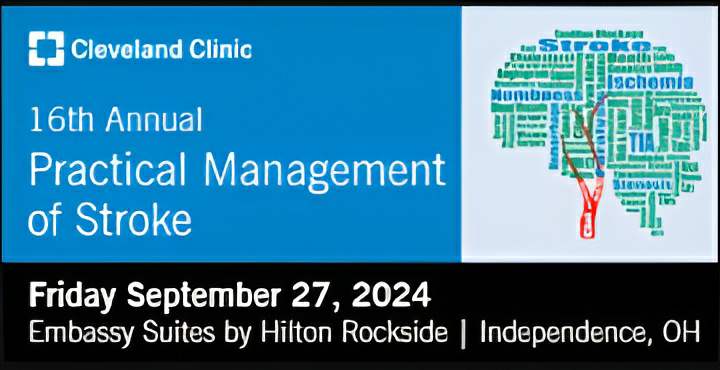Medical Amboss
Cleveland Clinic 16th Annual Practical Management of Stroke 2024
Cleveland Clinic 16th Annual Practical Management of Stroke 2024
we'll contact you for payment after receiving your order
Couldn't load pickup availability
Cleveland Clinic 16th Annual Practical Management of Stroke 2024
Include: 11 videos + 1 pdf, size: 5.12 GB
Target Audience: neurologists, emergency medicine physicians, neurosurgeons, primary care physicians
Information:
More than 795,000 strokes occur each year in the US, either new or recurrent, and they cause significant morbidity and mortality. Approximately 1 of every 20 deaths is caused by stroke, making it the fifth leading cause of death in this country, after heart attack, cancer, respiratory disease, and injuries. Stroke is preventable on many levels, both medical and lifestyle.
Given the significant morbidity and mortality associated with acute stroke and the growing number of stroke survivors, education aimed at improving the knowledge and competence of practitioners to assess, diagnose, and treat this disorder in a timely manner has the potential to substantially improve outcomes in this large patient population.
Learning Objectives
After completing this educational activity, participants will be able to do the following:
- Cite the evidence supporting the role of traditional and new lipid-lowering agents in the prevention of stroke.
- Summarize the clinical role of blood pressure control in patients who have suffered an acute intracerebral hemorrhage.
- Define the role of subarachnoid drains in the overall milieu of management strategies for subarachnoid hemorrhage.
- Critically review evidence on the efficacy of diabetes therapy on stroke risk and outcomes.
- Implement appropriate patient assessment and treatment methodology in stroke survivors, especially as it applies to depression, cognitive impairment, and dysphagia.
- Review the evidence on stroke syndromes anatomy and the correlation with a comprehensive neurologic assessment.
- Summarize the role of hypercoagulability in the pathogenesis of stroke and describe its potential role as a therapeutic target.
- Describe how to recognize, diagnose, and treat acute stroke cases in the emergency department.
Target Audience
This educational activity is intended for neurologists, emergency medicine physicians, neurosurgeons, primary care physicians, residents, fellows, nurse practitioners, nurses, physician assistants, speech therapists, physical therapists, occupational therapists and allied health professionals.
Topics:
- brochure.pdf
- Anatomical Correlation for the Comprehensive Neuro Assessment.mp4
- Diabetes Management for Stroke Prevention.mp4
- Emergency Department Case Presentations.mp4
- High Intensity Exercise in Stroke Recovery.mp4
- Hypercoagulability in Stroke.mp4
- Keynote Speaker- Blood Pressure Management After Acute Intracerebral Hemorrhage.mp4
- Medication Management for Post-Stroke Depression.mp4
- New Lipid Lowering Targets for Stroke Prevention.mp4
- Post-Stroke Continuum of Care- Assessment and Treatment of Cognitive impairment.mp4
- Reducing Clot Burden in SAH Management- Role of SA drains and Other Therapies.mp4
- Treatments for Post-Stroke Dysphagia.mp4
Share


